Understanding the Graduate School Cover Letter
A graduate school cover letter is a critical component of your application package. It serves as your introduction to the admissions committee, providing a snapshot of your qualifications, experiences, and aspirations. Unlike your resume, which lists your accomplishments, the cover letter allows you to tell your story, explaining why you are a strong candidate and why you are interested in the specific program. It’s your chance to make a memorable first impression and demonstrate your genuine enthusiasm for the program. A well-crafted cover letter can significantly increase your chances of acceptance, so taking the time to write a compelling one is essential.
The Purpose of a Cover Letter
The primary purpose of a graduate school cover letter is to persuade the admissions committee that you are a suitable candidate for their program. It’s not simply a formality but a tool to showcase your personality, your unique experiences, and how these align with the program’s objectives. The letter should highlight your relevant skills, academic background, and any research or professional experience that makes you stand out. Additionally, it provides an opportunity to explain any gaps in your resume or address any specific requirements or requests mentioned in the program’s application guidelines. Ultimately, the cover letter is your opportunity to make a strong case for your admission.
Highlighting Your Strengths

Your cover letter should spotlight your strengths, emphasizing the skills and experiences that make you a strong candidate for graduate school. Think about your academic achievements, research experience, leadership roles, and any unique qualities that set you apart. Quantify your accomplishments whenever possible, using data to demonstrate the impact of your work. For example, instead of saying ‘I improved sales,’ state ‘I increased sales by 15% in one quarter.’ Tailor your strengths to match the specific requirements and preferences of the program. Research the program thoroughly and align your skills and experiences with its goals and values. Remember to be authentic and genuine in your writing, letting your personality shine through.
Key Components of a Graduate School Cover Letter
Your Contact Information
Start your cover letter with your contact information at the top. This should include your full name, address, phone number, and email address. Ensure that your email address is professional and that it’s the one you regularly check. This section is crucial because it allows the admissions committee to easily contact you. It’s also important to format your contact information clearly and concisely to avoid any confusion. Make sure the details are accurate to prevent any delays in communication. This is the first impression you give, so it must be correct.
Addressing the Admissions Committee
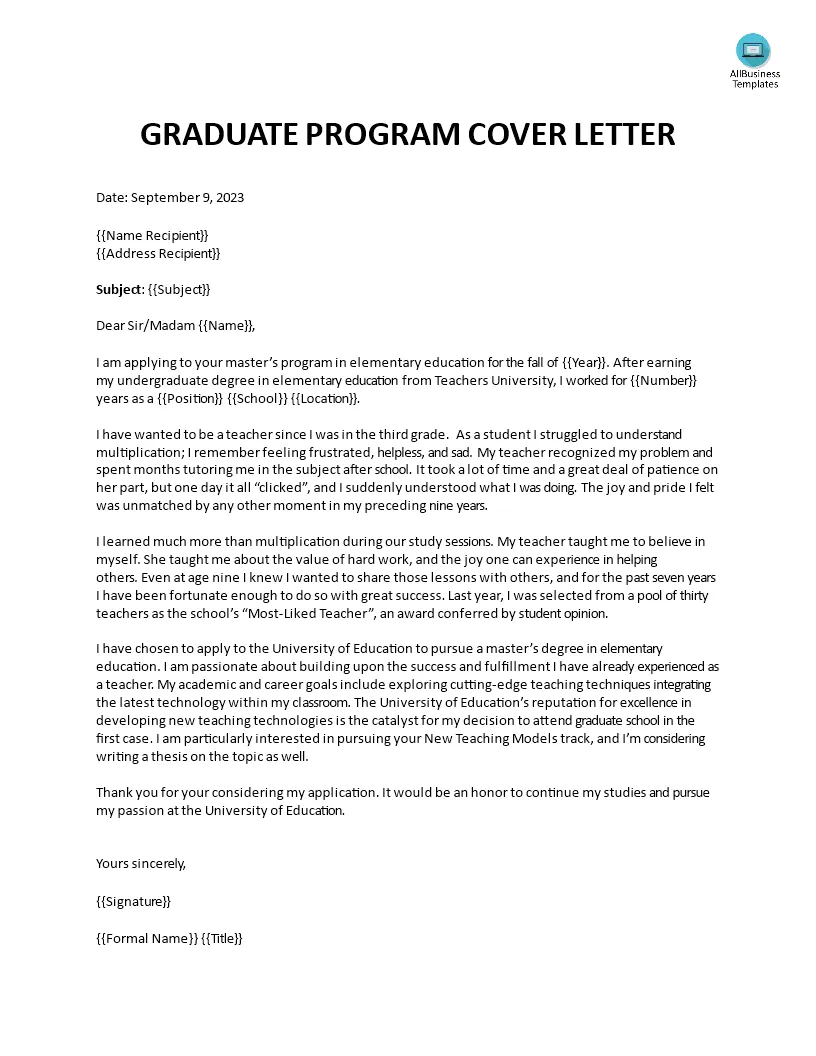
Always address your cover letter to a specific person if possible. Research the program and find out the name of the admissions committee chair or the program director. If you can’t find a specific name, use a formal greeting such as ‘Dear Admissions Committee’ or ‘Dear [Department Name] Admissions.’ Avoid generic greetings like ‘To Whom It May Concern’ as they show a lack of effort. Addressing the letter to a specific individual shows that you have taken the time to learn about the program and its personnel, which can make a positive impression. Using the correct name also demonstrates attention to detail, a trait highly valued in graduate studies.
Opening Paragraph Crafting
Your opening paragraph is your chance to grab the reader’s attention. Start with a strong statement that immediately conveys your interest in the program. Mention the specific program and university you are applying to. Briefly state why you are interested in the program and what you hope to achieve. This could include your career goals, research interests, or specific aspects of the program that appeal to you. Make sure your introduction is concise and to the point, providing a clear overview of your intent. Avoid generic or overly long introductions. Instead, focus on demonstrating your enthusiasm and suitability for the program.
Body Paragraphs Detailing Experience
The body paragraphs are where you elaborate on your qualifications and experiences. Provide detailed information about your academic background, including your undergraduate degree, relevant coursework, and any honors or awards you have received. Highlight any research experience, internships, or professional work that is relevant to the program. Use the STAR method (Situation, Task, Action, Result) to describe your experiences, explaining the context, your role, the actions you took, and the outcomes achieved. This approach provides clear examples of your skills and abilities. Use each paragraph to discuss a different aspect of your background, ensuring a balanced and comprehensive overview.
Showcasing Academic Achievements
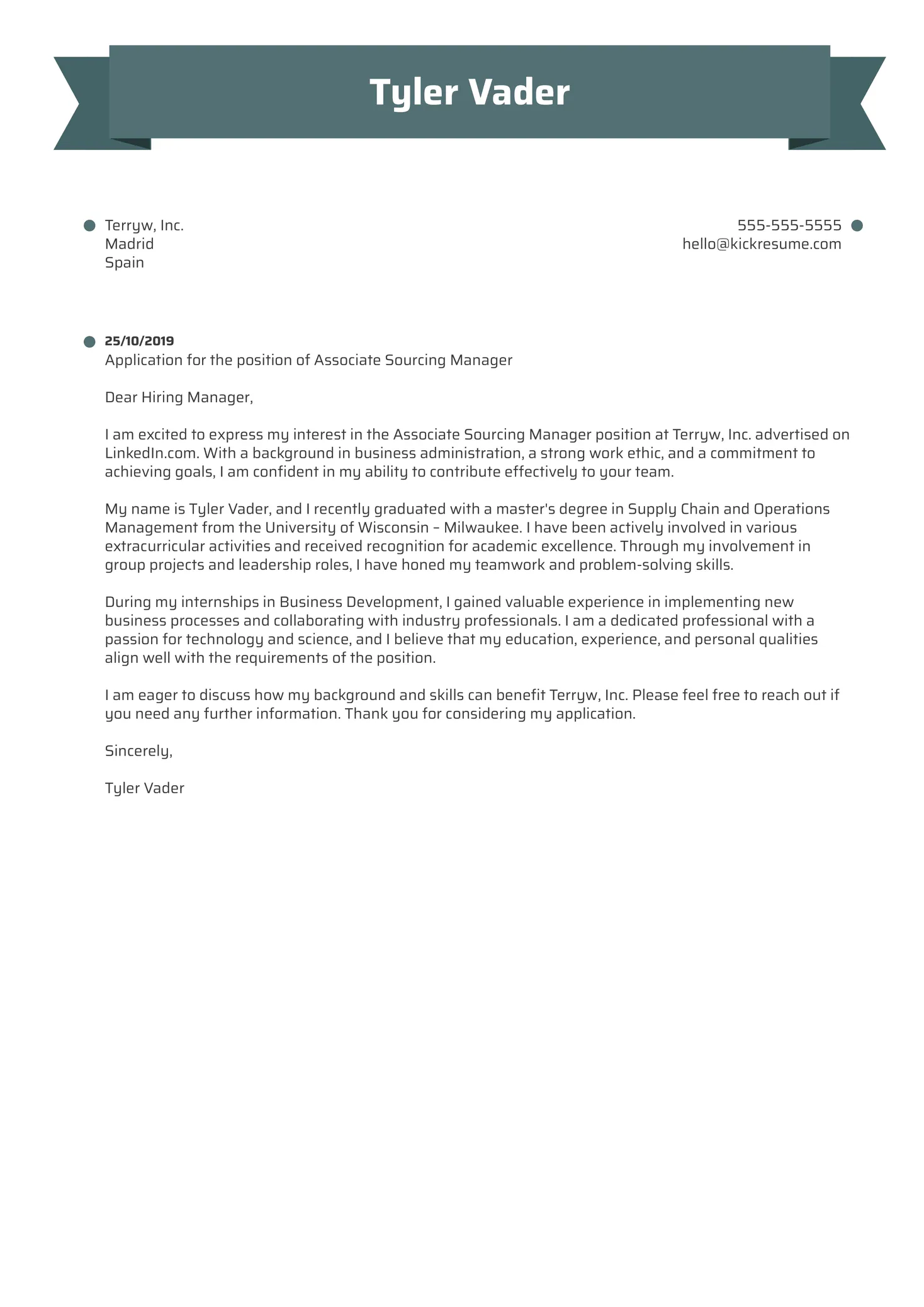
When showcasing your academic achievements, be specific and provide concrete examples. Mention any outstanding grades, projects, or thesis work that demonstrates your academic prowess. Highlight any awards, scholarships, or recognition you have received. If you have presented at conferences or published research papers, include those details as well. Quantify your achievements whenever possible – for instance, mention your GPA, the number of publications, or the impact of your research. This shows the admissions committee the extent of your academic capabilities and your potential for success in graduate studies. Always relate your achievements to the program’s specific requirements.
Highlighting Relevant Skills
Focus on skills that are relevant to the program and the type of work you want to do after graduation. Mention technical skills, such as programming languages or software proficiency. Highlight any soft skills, such as teamwork, communication, or leadership abilities. Provide specific examples of how you have used these skills in the past. Relate these skills directly to the program’s requirements and research opportunities. For example, if the program emphasizes data analysis, highlight your experience with statistical software and your ability to interpret data effectively. This helps the committee see your potential contribution to the program.
Expressing Your Goals
Clearly articulate your career goals and how the graduate program will help you achieve them. Explain your research interests and why you want to pursue them within the program. Mention specific professors or research groups you are interested in working with, showing that you have done your research. Explain why you are interested in this program at this specific university. Be clear, concise, and passionate about your future aspirations. This demonstrates that you have a plan and that the program aligns with your long-term objectives. Show how the program’s resources and opportunities will help you to achieve your goals.
Concluding Your Letter
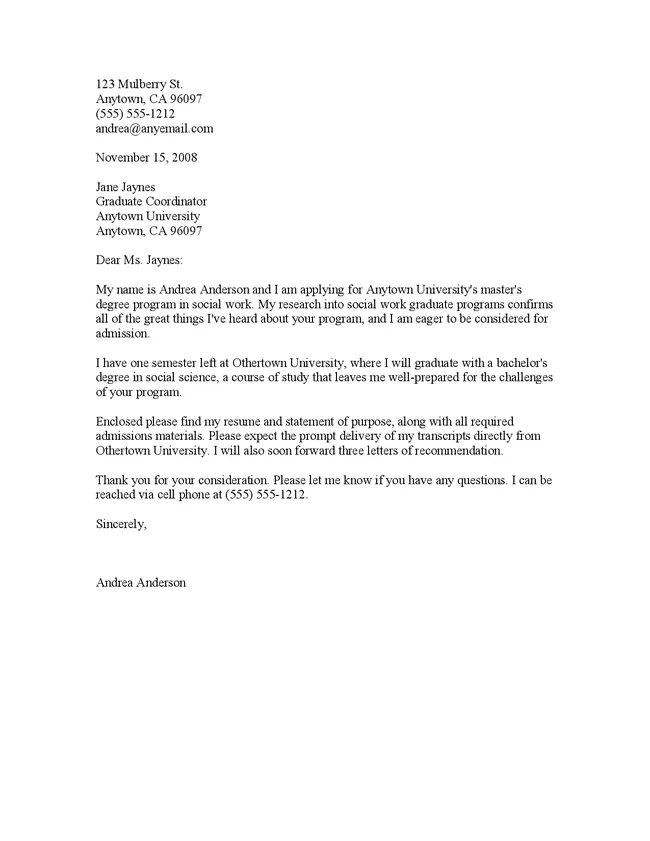
Your concluding paragraph should reiterate your interest in the program and thank the admissions committee for their time and consideration. Reiterate your suitability for the program and your enthusiasm for the opportunity. Reiterate your excitement for the opportunity. Include a call to action, such as expressing your availability for an interview. End with a professional closing, such as ‘Sincerely’ or ‘Best regards,’ followed by your typed name. Keep the conclusion concise and professional, leaving a lasting positive impression. Proofread the entire letter one last time to ensure there are no errors.
Formatting and Style Guide for Cover Letter
Font Selection
Choose a professional and easy-to-read font for your cover letter. Common choices include Times New Roman, Arial, and Calibri. Use a font size between 10 and 12 points for the body text. Ensure consistency in font size and style throughout the document. Avoid using decorative or overly stylized fonts that can distract from the content. Your goal is to present a clean and professional document that is easy for the reader to navigate. Maintaining a standard font will ensure your cover letter looks polished and professional.
Margins and Spacing
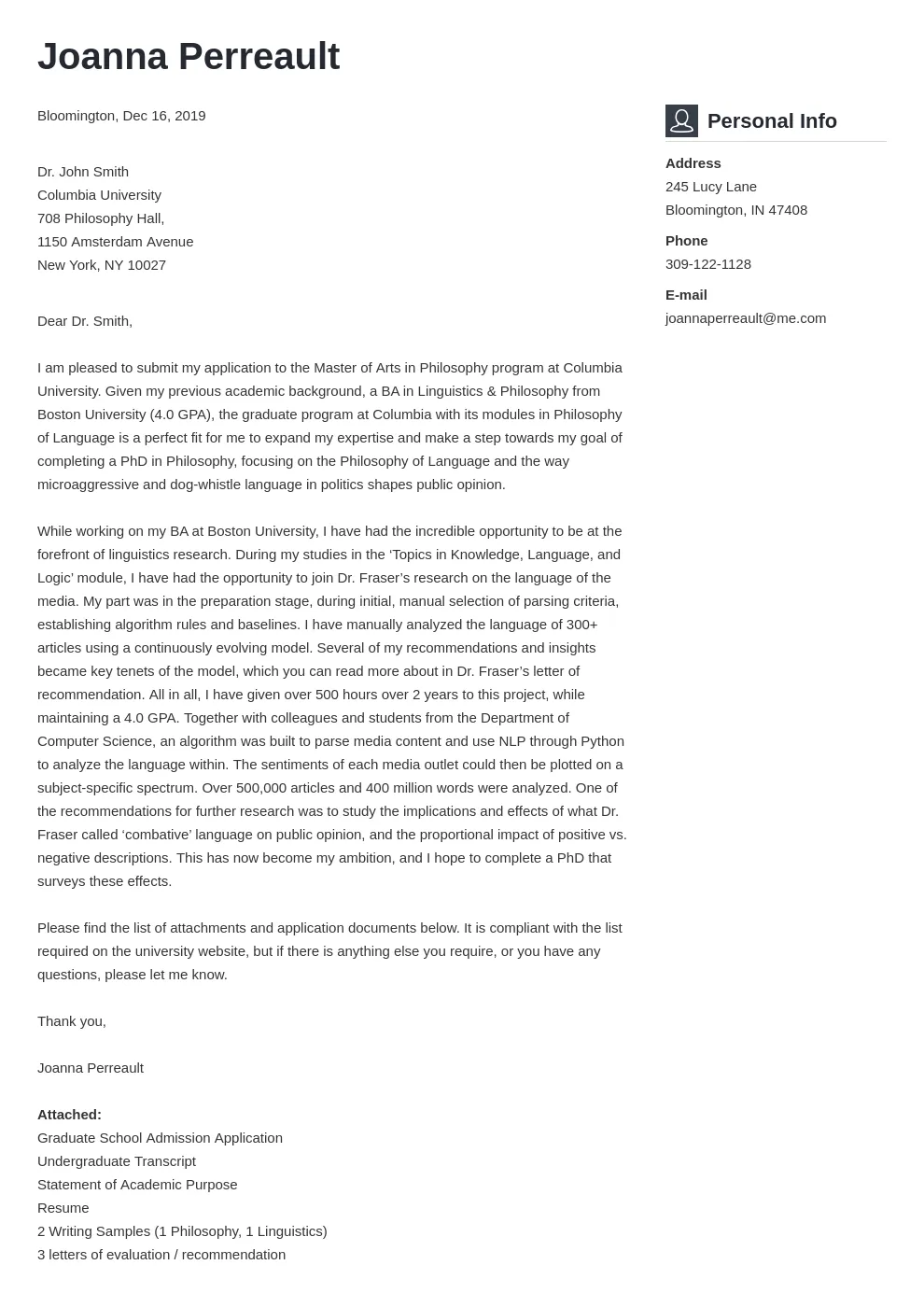
Set standard margins, typically one inch on all sides. Use single spacing for the body text and double spacing between paragraphs. This creates a clean and organized layout. Avoid cramped text by ensuring ample white space throughout the document. Proper spacing makes the cover letter easier to read and visually appealing. Maintain consistency in spacing throughout the entire document. Ensure that your formatting does not distract from the content.
Proofreading and Editing
Proofread your cover letter multiple times to catch any errors in grammar, spelling, and punctuation. Use a spell checker, but also read the letter carefully yourself, as spell checkers can miss context-based errors. Ask a friend, professor, or career counselor to review your cover letter for clarity and coherence. Make sure the language is clear, concise, and professional. Ensure that your writing reflects well on your abilities. Pay close attention to detail to eliminate any mistakes that could undermine your application. A well-proofread cover letter demonstrates your attention to detail and professionalism.
Cover Letter Examples
Example 1 Focus on Research
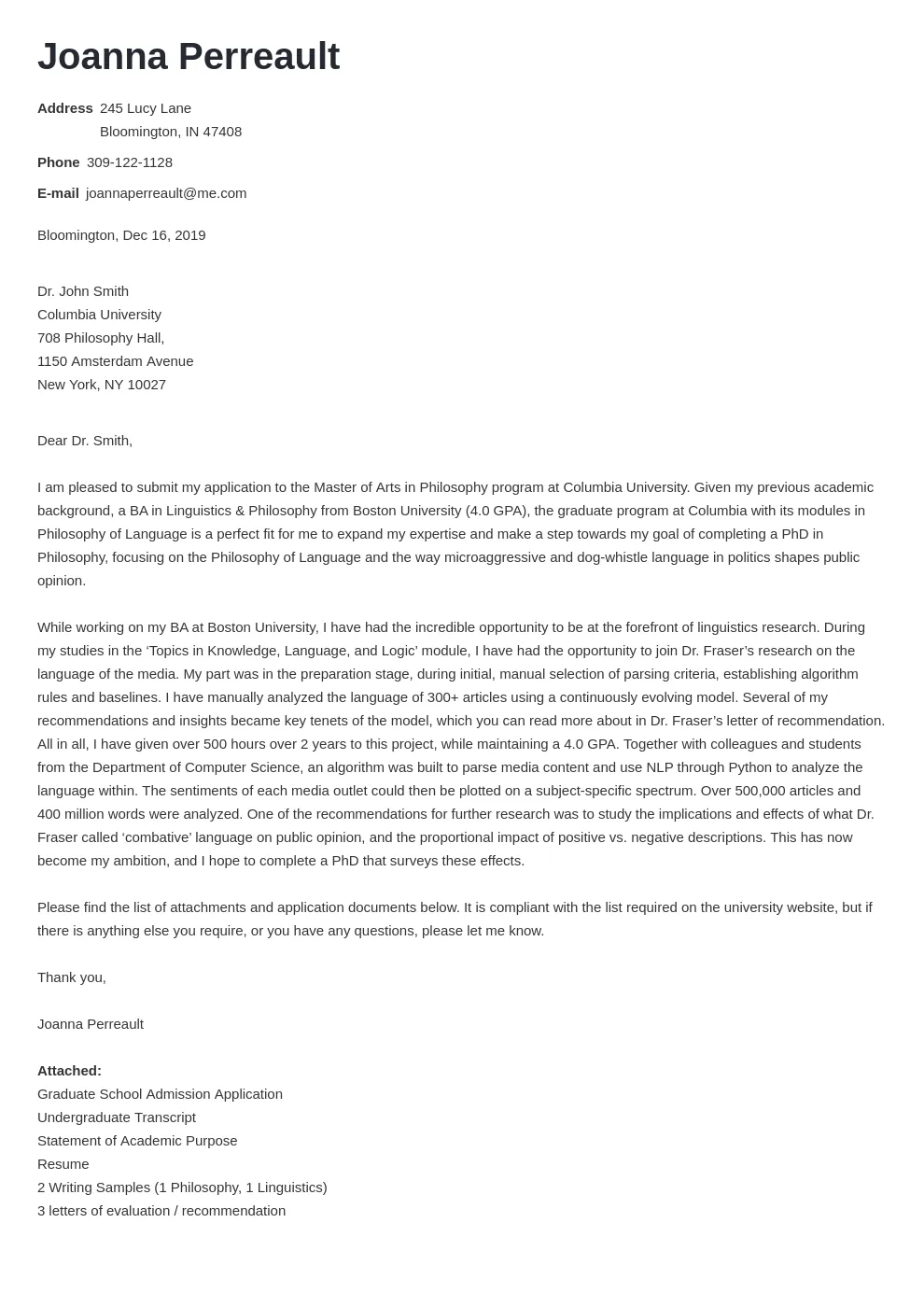
Dear Admissions Committee, I am writing to express my strong interest in the PhD program in Molecular Biology at [University Name]. My passion for research and my experience in [specific research area] make me a strong candidate for your program. In my undergraduate studies at [University Name], I conducted research under Professor [Professor’s Name], where I [describe research experience and accomplishments]. My findings were presented at [Conference Name]. I am particularly drawn to your program’s focus on [specific research area] and the opportunity to work with Professor [Professor’s Name]. I am eager to contribute to the research community and further develop my skills in [specific skills]. I am confident that your program will provide the resources and mentorship I need to succeed. Thank you for your consideration. Sincerely, [Your Name]
Example 2 Emphasizing Leadership
Dear Admissions Committee, I am writing to express my interest in the Masters program in [Field] at [University Name]. My leadership experience and commitment to [specific area] align perfectly with your program’s values. During my undergraduate career at [University Name], I served as the president of [Club/Organization], where I [describe leadership accomplishments and quantify achievements]. Additionally, I volunteered with [Organization] and organized [project]. I am particularly interested in the program’s focus on [specific aspect]. I am confident that my leadership skills and dedication to [field] will allow me to make significant contributions to your program. Thank you for your time and consideration. Sincerely, [Your Name]
Example 3 Highlighting Relevant Skills
Dear Admissions Committee, I am writing to apply to the [Program Name] program at [University Name]. My skills in data analysis, coupled with a strong foundation in [relevant field], make me well-suited for your program. During my internship at [Company Name], I [describe skills in action, quantifying results]. I am proficient in [specific software]. Your program’s curriculum, particularly the focus on [specific course/area], excites me. I am eager to learn and apply my skills. I am eager to learn from the faculty. I am confident that I possess the skills and experience to thrive in your program. Thank you for your time and consideration. Sincerely, [Your Name]
